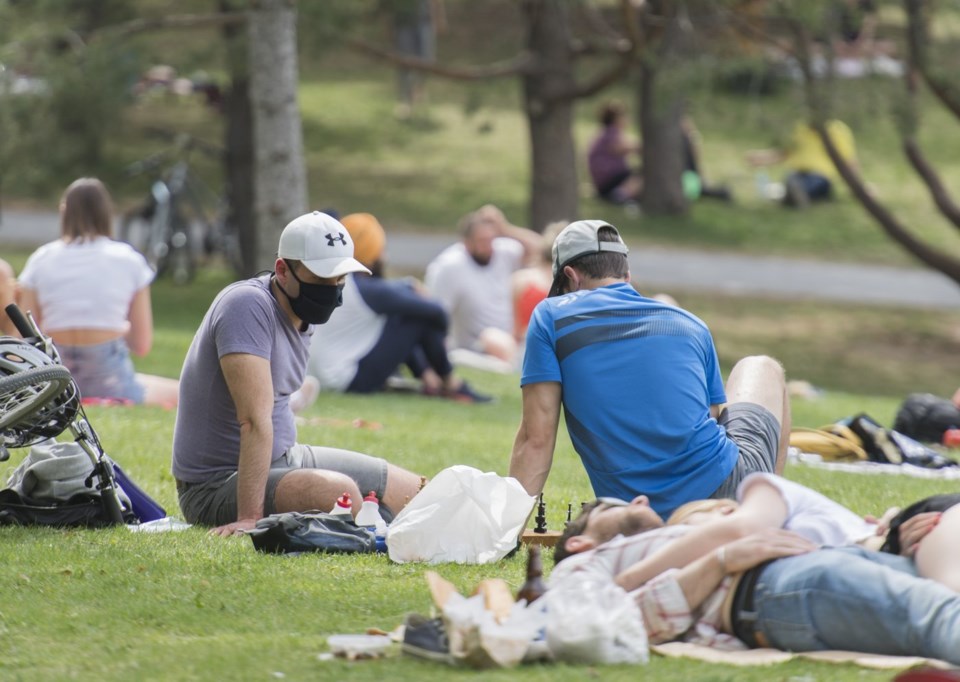Green space helped protect the mental health of city-bound Canadians during the early phase of the COVID-19 pandemic, a new study suggests, even as the number of people with depression surged.
People living in greener neighbourhoods were less likely to be depressed in the first months of the pandemic, said the study published in the peer-reviewed journal PLOS One, with stronger benefits for those who weren't already depressed.
That protective lifeline was also more pronounced for people with mobility issues or lower incomes, though only among those who weren't already depressed, the study said.
"The protective effects during the pandemic could be because green spaces act as a refuge from financial and other stressors and the restorative and therapeutic effects of accessing nature," read the study, co-authored by university and federal public health researchers.
The researchers say the study is believed to be the first to assess changes in mental health before and after the pandemic in relation to residential greenery.
The benefits of urban green space have been widely shown to reduce risks of chronic diseases, while providing environmental benefits by lowering air pollution and extreme heat temperatures.
Other studies have also shown greenery in urban areas is associated with reduced rates of depression, loneliness and helps narrow the gap in mental health outcomes for people with different socio-economic backgrounds.
Lead author and Carleton University professor Paul Villeneuve says this latest study highlights how urban planning and mental health policy should prioritize equitable access to green space to strengthen community resilience.
"This would tell you that there's importance in terms of incorporating green spaces in terms of the design of cities, neighborhoods," he said.
The study drew from over 13,000 participants 50 years and older living in urban areas who are taking part in the larger national Canadian Longitudinal Study on Aging.
The study found the prevalence of depression nearly doubled among participants, from about 11 per cent before the pandemic to 22 per cent in surveys done between May and December 2020.
Using the participants' postal codes, the researchers evaluated how much green space was within a 500-metre buffer.
Among those who were not already depressed, people living in the greenest areas were about 19 per cent less likely to experience depression compared to those in the least green areas.
People with mobility issues also noticeably benefited from neighborhood greenspace, the study suggested. The researchers speculate it could be because of the "crucial role" residential and immediate green spaces played at a time when some public spaces and parks were inaccessible or restricted.
The vegetation index used by the researchers doesn't differentiate between the type of greenery or where it's located, whether it's in a football field or cemetery. Villeneuve says an area of future research would be to figure out whether particular "aspects of greenness," such as a park or a backyard, produce certain benefits compared to others.
The study also only measured green space around where a participant lived, missing out on the spaces people may have travelled to for relief during the pandemic.
But Villeneuve said given people were likely not straying as far from home during the pandemic as they may have otherwise, looking at green spaces a short walk away "becomes really important to do."
This report by The Canadian Press was first published Aug. 21, 2025.
Jordan Omstead, The Canadian Press




